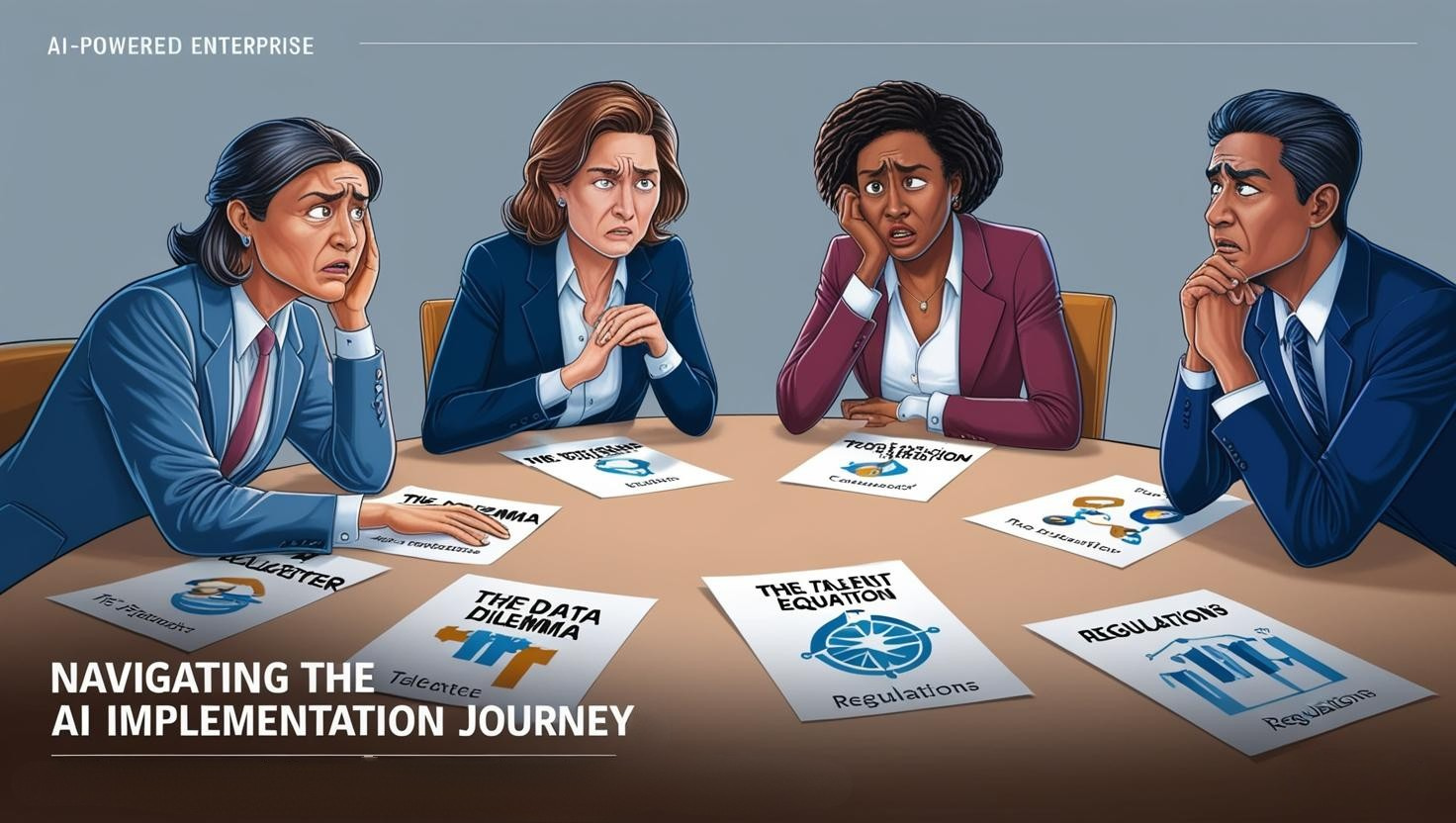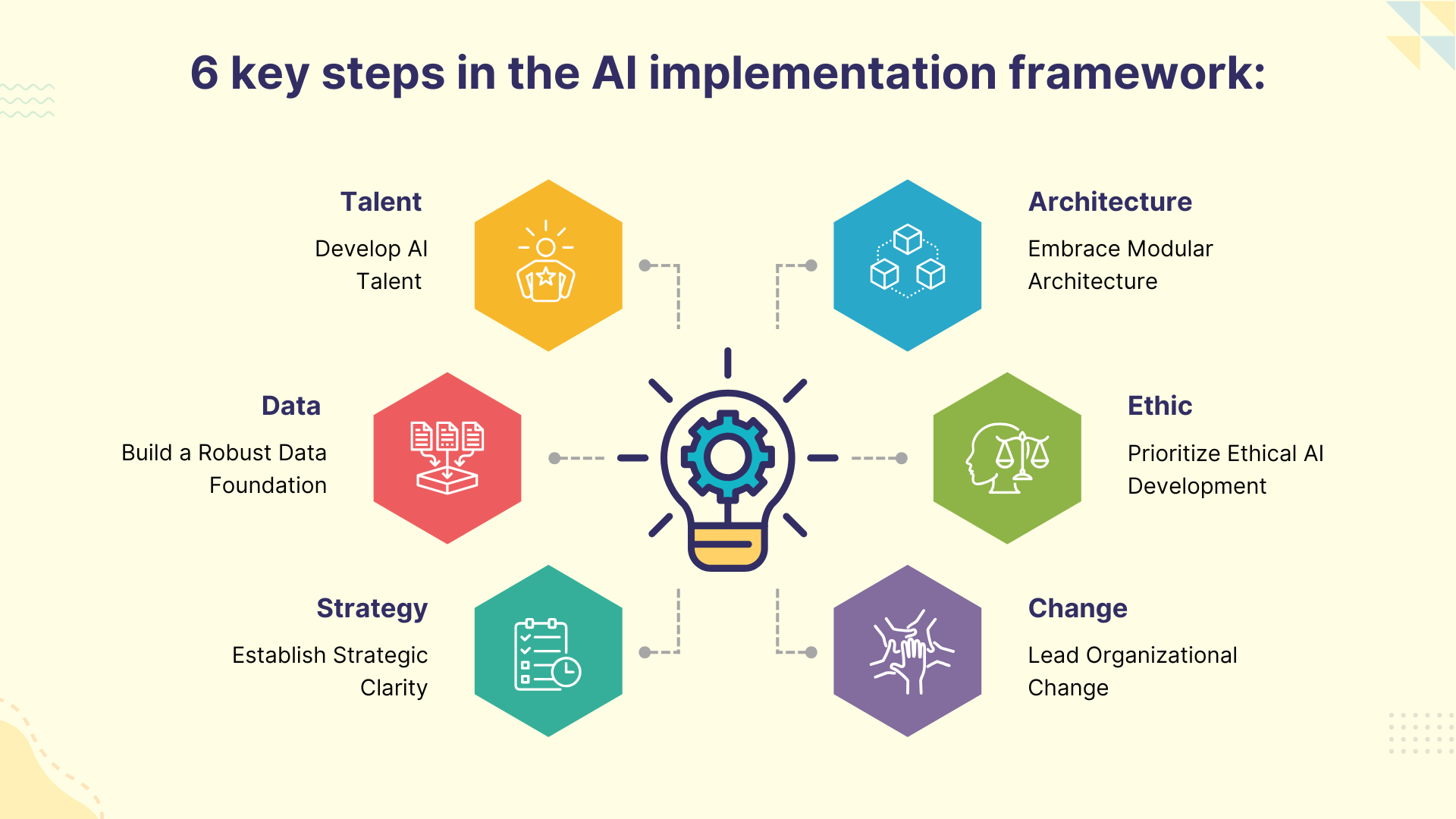Challenges in AI Agent Implementation

Introduction
As artificial intelligence (AI) becomes an increasingly critical driver of business value, organizations face a complex journey from initial adoption to real-world impact. The potential rewards are immense—PwC estimates that AI could add $15.7 trillion to the global economy by 2030, representing the technology's economic potential rather than a direct growth projection [1]. However, this figure comes with important caveats: it assumes that organizations can effectively navigate the multifaceted challenges of AI implementation.
In reality, the path to AI success is fraught with obstacles. Gartner research indicates that over 85% of AI projects encounter significant delays or outright failure [2]. This implementation gap isn't simply a matter of technological limitations—it reflects the complex interplay of technical, organizational, and ethical factors that shape the AI journey.
In this article, we'll explore the key challenges that impede successful AI implementation and present a comprehensive framework for overcoming them.
Key Implementation Challenges
The Data Dilemma
Data is the lifeblood of AI. Yet organizations consistently struggle with data-related challenges that can derail even the most promising initiatives.
At a fundamental level, AI systems amplify existing data problems. Flawed or biased inputs inevitably lead to flawed outputs. Ensuring data quality and representativeness is therefore critical to the success of any AI project.
Privacy and security concerns add another layer of complexity, particularly with the rise of generative AI models that are trained on massive datasets.
Organizations must navigate a complex web of legal and ethical considerations around data use, often in the face of evolving regulations like the EU's General Data Protection Regulation (GDPR).
Effective data governance is key to addressing these challenges. Yet many organizations lack robust frameworks to ensure responsible data management throughout the AI lifecycle.
Investing in data excellence, from collection and integration to analysis and application, is the bedrock of successful AI implementation.
The Talent Equation
The AI skills gap continues to widen. Demand for AI expertise has surged, but the supply of qualified professionals has not kept pace [3]. This scarcity of specialized talent creates a competitive hiring landscape and makes it difficult for organizations to build in-house AI capabilities.
Reskilling existing employees to work effectively with AI systems presents another significant challenge. AI doesn't just automate tasks, it fundamentally transforms workflows and roles.
Ensuring that employees have the skills and mindset to thrive in an AI-enabled environment requires significant investment in training and change management.
Building collaborative bridges between technical teams and domain experts is also critical. AI initiatives often fail when they are siloed within IT departments, disconnected from the business units they are meant to serve.
Fostering cross-functional collaboration and aligning AI initiatives with strategic business objectives is key to driving real-world impact.
Ethical and Regulatory Considerations
As AI grows more powerful and pervasive, ethical considerations move from theoretical concerns to practical imperatives. Algorithmic bias, in particular, has emerged as a major risk—one with the potential to amplify existing societal inequities at scale.
The dangers of biased AI are evident in sectors like financial services. Studies have found that mortgage lending algorithms charged borrowers of color significantly more in interest and were more likely to deny them loans, largely due to biases in the underlying data and models [8] [9].
Addressing these challenges requires proactive bias detection and mitigation strategies, as well as transparent and explainable AI decisions.
Organizations must also navigate a complex and evolving regulatory landscape, with frameworks like the EU AI Act introducing new compliance requirements.

Solutions Framework
Successfully navigating the challenges of AI implementation requires a comprehensive approach that addresses technical, organizational, and ethical dimensions in tandem. Based on insights from research and practice, we propose a six-part framework:
- Establish Strategic Clarity: Begin with a clear business rationale, defining specific and measurable objectives that align with organizational strategy.
- Build a Robust Data Foundation: Invest systematically in data excellence. Implement comprehensive data governance frameworks with clear access controls. Regularly audit data for quality, completeness, and potential biases.
- Develop AI Talent Strategically: Address the skills gap through a multifaceted approach. Invest in training programs to build internal expertise. Partner with educational institutions to establish talent pipelines. Foster cross-functional collaboration.
- Embrace Modular Architecture: Define a scalable, modular architecture that enables enterprise-wide AI implementation. Create integration pathways between AI systems and legacy infrastructure.
- Prioritize Ethical AI Development: Embed ethical considerations throughout the AI lifecycle. Develop clear guidelines for responsible AI applications. Implement bias detection and mitigation practices. Engage proactively with evolving regulatory requirements.
- Lead Organizational Change: Recognize that successful AI adoption is fundamentally a change management challenge. Secure executive sponsorship and clear leadership commitment. Foster a culture of experimentation and continuous learning.
Real-World Success Stories
Organizations across sectors are demonstrating that these challenges can be overcome with the right approach:
In financial services, one leading bank deployed an AI-powered platform to streamline its software vulnerability management. By using GenAI to triage millions of cyberthreat alerts down to a handful of critical vulnerabilities, the bank dramatically reduced risk while freeing up developers to focus on building new features rather than chasing false positives.
The bank calculated ROI by weighing the cost of potential risks against the cost of remediation, enabling them to balance innovation with regulatory demands. [1]
In the technology sector, a major company uses a centralized process to collect and prioritize internal GenAI use cases from across the organization. One successful example is a GenAI-powered sales enablement tool that helps reps quickly generate RFP responses and prepare for client pitches by surfacing relevant information from the company's knowledge base. The tool has already demonstrably increased the speed of deal closure. [1]
In consumer goods, a global leader is leveraging GenAI to fully automate its brands' social media presence. The solution scans for trending topics, hashtags, and viral moments relevant to each brand and auto-generates timely posts with copy, images, and video. With human oversight for brand safety, the tool has dramatically increased marketing productivity, reach, and sales while reducing reliance on agencies. [1]
These case studies illustrate that the key to effective AI implementation lies not in having the most advanced algorithms but in orchestrating a complex system of people, processes, and technologies with strategic intent and operational discipline.
The Path Forward
As AI continues its rapid evolution from experimental technology to business imperative, organizations must approach implementation with both bold vision and pragmatic execution. By addressing data challenges, cultivating talent, embracing ethical practices, and leading organizational change, companies can close the gap between AI potential and real-world performance.
The journey to AI success is neither simple nor straightforward. It requires navigating technical complexities, organizational dynamics, and societal considerations. But for organizations willing to invest in this multifaceted effort, the rewards are substantial—not just in terms of financial returns, but in the ability to drive meaningful value for customers, employees, and society at large.
In the final analysis, the difference between AI leaders and laggards won't be determined by technological sophistication alone. It will come down to the ability to weave AI into the organization’s fabric, creating a virtuous cycle of continuous learning and improvement.
The road ahead is challenging, but the destination is clear. By approaching AI implementation with strategic intent, ethical grounding, and a spirit of innovation, organizations can chart a course to a more intelligent and sustainable future.
References
[1] Deloitte, "Deloitte's State of Generative AI in the Enterprise: Now decides next", 2025
[2] Gartner, "Top Challenges of AI Adoption", 2019
[3] LinkedIn, "AI Talent in the European Labour Market", 2019
[4] Thomson Reuters Institute, "Ready or Not: Artificial Intelligence and Corporate Legal Departments", 2019
[5] PwC, "2022 AI Business Survey", 2022 [6] Atos Institute, "Performing AI: Leading Your Organization to New Frontiers", 2022
[7] PwC, "Sizing the Prize: What's the Real Value of AI for Your Business and How Can You Capitalise?", 2017
[8] Bartlett, R., Morse, A., Stanton, R., & Wallace, N., "Consumer-lending discrimination in the FinTech era", Journal of Financial Economics, 2022
[9] Urban Institute, "Analyzing Home Mortgage Disclosure Act Data for Fair Lending Compliance", 2024

